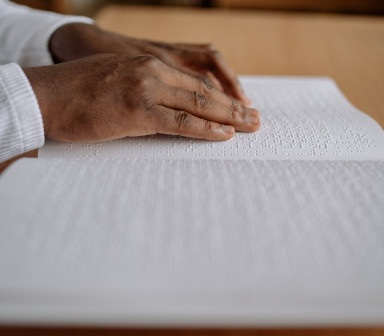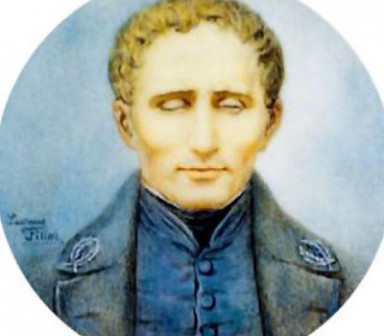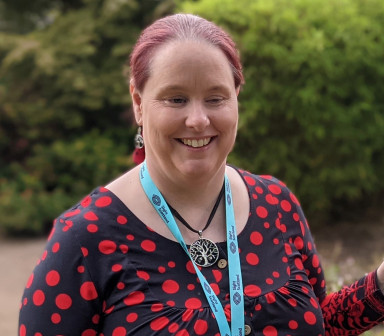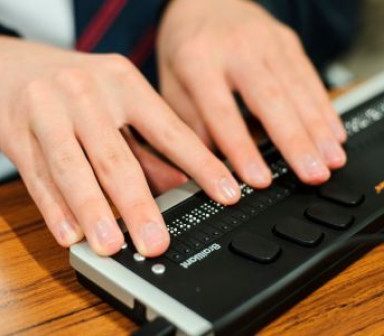Sight Scotland’s National Braille Week is important as it helps to raise the profile of braille in wider society and allows people to see that it has not been replaced by advancements in technology but, rather, is a vibrant resource which allows severely sight impaired people to access the written word independently.
Braille expert, Pam Young, from the Royal Blind School in Edinburgh, says braille literacy remains a vital resource for all sight impaired leaners and should be taught alongside technology to enhance accessibility and educational opportunities.
She explains: “Braille is an important medium for severely sight impaired learners; it provides the opportunity to access the written word and read independently. Imagine not being able to read a book, a magazine, or a menu at a restaurant; these are just a few of the opportunities that braille offers to people who are not able to access print.
“We teach our learners to write braille initially with a Perkins Brailler which is, in effect, the pen and paper for a braille user, enabling them to produce hard copy braille and read what they have written. As the pupils progress through their braille learning, we introduce refreshable braille technology, such as electronic braille displays and notetakers, which provide opportunities for the young people to access the internet, create and save documents, and send and receive emails, in the same way a sighted pupil would use a laptop or desktop computer.
“The use of technology such as screen reading software and audio books has revolutionised the way severely sight impaired people access information but, in my opinion, this technology should be taught alongside, rather than replace, the literacy skills of reading and writing that are accessible via the medium of braille.
“Sight Scotland’s National Braille Week is important as it helps to raise the profile of braille in wider society and allows people to see that it has not been replaced by advancements in technology but, rather, is a vibrant resource which allows severely sight impaired people to access the written word independently.
“Braille literacy learning and teaching aims to equip learners with freedom, independence, equitable access to the school curriculum and, eventually, the world of work. The ability to read and write in class, alongside their sighted classmates fosters self-esteem and confidence in learners. Braille literacy can also open doors for severely sight impaired people to develop further skills which they might not have access to if they hadn’t learned to read and write.”
Pam Young, who has worked at the Royal Blind School in Edinburgh for 27 years, is the braille subject specialist at the school and has taught braille to a wide range of learners over the course of her time at the school. She is always keen to explore innovative, individualised approaches to braille learning and teaching to make it accessible and exciting to all potential learners, including those with additional support needs.
Braille, which was created by Louis Braille in France over 200 years ago, is code in which characters are represented by patterns of raised dots that are felt with the fingertips. Braille enables blind and visually impaired people to read and write independently.



